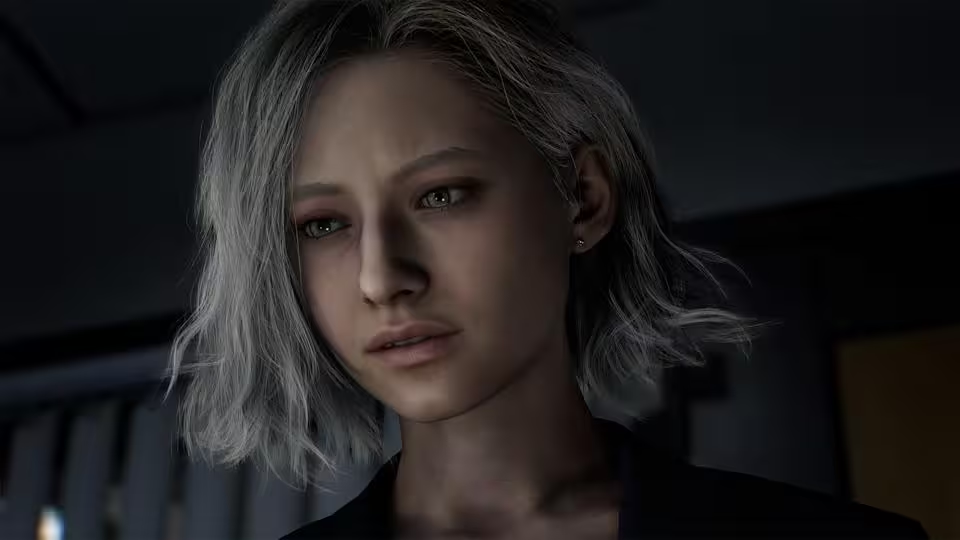8 Minutes
Capcom’s Next Step in Survival Horror
For nearly three decades, Capcom has iteratively refined the survival horror genre through the Resident Evil franchise. From action-driven chapters to tense, resource-starved nightmares, the series has continuously balanced spectacle and vulnerability. Resident Evil Requiem (RE9) looks poised to continue that momentum, delivering a modernized survival-horror experience that leans into immersion, atmosphere, and character-driven tension.
Shortly before Gamescom 2025, I played the opening sequence of Resident Evil Requiem, which centers on a new protagonist, Grace Ashcroft (daughter of Alyssa Ashcroft from Resident Evil Outbreak). The demo places her in a harrowing escape from a derelict clinic inside a sprawling mansion — a compact slice of gameplay that demonstrates Capcom’s continued commitment to a crafted, cinematic horror loop.
This content is not available due to your privacy preferences. Update your settings here to see it.
First Impressions: Immersion and Technical Fidelity
Resident Evil Requiem follows the tradition established by Resident Evil VII and Village by prioritizing immersion as a design pillar. Using Capcom’s RE Engine, the demo showcased remarkable lighting, detailed character rendering, and environmental fidelity that amplify dread with subtle visual storytelling. Long corridors lit only by a lighter and punctuated by a distant red glow made for striking, cinematic moments that highlight the engine’s strengths in real-time lighting and texture work.
Demo Breakdown: The Clinic Sequence
The playable demo begins with Grace regaining consciousness strapped to an inverted gurney. After freeing herself, she discovers a ruined clinic littered with the corpses of medical staff and a monstrous predator lurking above in the ceiling. The scenario is intentionally minimalist: no firearms, only a few empty bottles to use as distractions, and a lighter to illuminate the immediate surroundings. Mechanically, the sequence functions as a stealth-puzzle, forcing players to learn the monster’s patrol patterns, ration limited resources, and navigate cramped spaces under constant threat.
Key Moment: Predator Encounter and Consequences
One standout encounter involved evasion that devolved into a brutal contact sequence. While hauling a cart toward a high toolbox to reach a fuse, the creature smashed the cart into Grace, flinging her into a wall and biting her shoulder. After spending the only healing item, I retreated to a safe room and later returned to retrieve the tool with greater caution. The scene demonstrated the game’s cadence: tension, sudden violence, scarce recovery options, and high-stakes decision making.

Perspective Options: First-Person with a Third-Person Alternative
Requiem ships by default in first-person, which preserves a claustrophobic, limited perspective ideal for building dread. Notably, Capcom has integrated an optional third-person camera — a mechanic first introduced post-launch for Resident Evil Village via the Shadows of Rose DLC. I tested the demo from both perspectives and found the presentation well-optimized for each. First-person provides immediate tension and detail, while third-person offers situational awareness that can alter stealth and chase tactics without undermining the horror atmosphere.
Design Philosophy: Familiarity vs. Refinement
The demo’s core design is recognizably in line with recent entries: players are frequently vulnerable, forced to evade or outsmart stronger foes. This design trajectory has become a sub-genre in itself — the ‘stalk-and-flee’ horror loop. While that can feel repetitive across the broader horror market, Resident Evil Requiem demonstrates how polish and a strong protagonist can revitalize familiar beats. Grace is more vocal and defined than Ethan Winters was early in his arc; she reacts audibly, talks to herself, and communicates fear and determination in ways that create empathy and narrative momentum.

Features and Technology Highlights
Resident Evil Requiem leverages several technical and gameplay features that matter to both gamers and industry observers:
- RE Engine Visuals: Advanced lighting, character shading, and environment detail that enhance atmosphere and immersion.
- Dual Camera Modes: First-person for intensity and third-person for broader tactical awareness.
- Stealth-Puzzle Encounters: AI behavior and patrol patterns that reward observation and resource management.
- Audio Design: Spatial audio cues and a restrained soundscape emphasize the sensation of being hunted.
- Platform Optimization: Confirmed for PC, PS5, and Xbox Series X|S with expected next-gen performance enhancements.
RE Engine and Real-Time Rendering
Capcom’s RE Engine continues to push real-time rendering for console and PC titles. In Requiem’s demo, the engine’s handling of dynamic lighting, reflections, and material detail contributed directly to emotional impact. For developers and tech enthusiasts, it’s an example of how incremental engine evolution can deliver noticeably richer player experiences without wholesale reinvention.

Comparisons: Requiem vs. Previous Entries
Compared with Resident Evil VII and Village, Requiem refines rather than reimagines the formula. Where Village experimented with larger, more varied locales and a theme-park-like structure in parts, Requiem’s demo felt focused and tightly paced. The tone hews closer to VII’s intimate terror while incorporating Village’s polished production values and varied camera options.
Advantages over recent entries include a more fleshed-out protagonist from the outset and a careful balance between scripted beats and reactive AI behavior. The choice to allow third-person gameplay without compromising first-person intensity is a direct lesson learned from Village’s post-launch options.
Advertisement Advertisement
Use Cases: Who Will Appreciate Requiem?
Resident Evil Requiem has clear appeal across multiple audiences:
- Core horror fans who favor tension, atmosphere, and limited resources.
- Players who appreciated the RE Engine fidelity in Village and want more cinematic horror.
- Tech and game design professionals studying modern real-time rendering, character animation, and audio-driven tension design.
- Multi-platform gamers on PS5, Xbox Series X|S, and PC seeking next-gen optimizations.
Market Relevance and Expectations
As AAA horror games become more cinematic and technology-driven, Resident Evil Requiem represents a strategic move for Capcom to consolidate the franchise’s strengths. It’s positioned to attract both nostalgia-driven veterans and next-gen players who prioritize production value and engine-driven immersion. Given Capcom’s recent critical and commercial successes, Requiem could reinforce the studio’s leadership in survival-horror IP and influence competitors adopting similar immersion-first strategies.
Potential Challenges
Familiarity is a double-edged sword. While the demo showcases excellent execution, Capcom will need to diversify pacing, environments, and encounter design across the full release to avoid franchise fatigue. My preview left me eager to see how Requiem scales its tension across larger sections and whether it introduces fresh mechanics beyond polished stealth and chase scenes.
Capcom
Final Thoughts: Polished, Familiar, and Promising
Resident Evil Requiem feels like an evolution rather than a revolution — a well-crafted, high-fidelity continuation of the immersive survival horror that Capcom has honed since Resident Evil VII. The demo’s clinic escape showcased excellent environmental design, believable AI moments, and a protagonist who conveys vulnerability with nuance. The third-person option, RE Engine polish, and careful audio design round out a package that’s both accessible and technically impressive.
While some scenarios will feel familiar to long-time series followers, the quality of execution and attention to detail are enough to command respect. Capcom still has opportunities to surprise players with narrative and gameplay variety across the full campaign, and I’m intrigued to see what other structural experiments Requiem will attempt beyond the demo’s narrower slice.
Release Information
Resident Evil Requiem is scheduled for release on February 27, 2026, on PC, PlayStation 5, and Xbox Series X|S. Given Capcom’s track record with platform optimization and post-launch content, expect additional technical updates and potential camera or accessibility options after launch.
Advertisement Advertisement
Overall, Requiem demonstrates that familiarity in game design can be a strength when combined with high production values, refined mechanics, and a more defined protagonist. For professionals and enthusiasts tracking game technology, it’s a compelling case study in engine-led iteration, player perspective design, and modern horror pacing.
Source: engadget


Leave a Comment